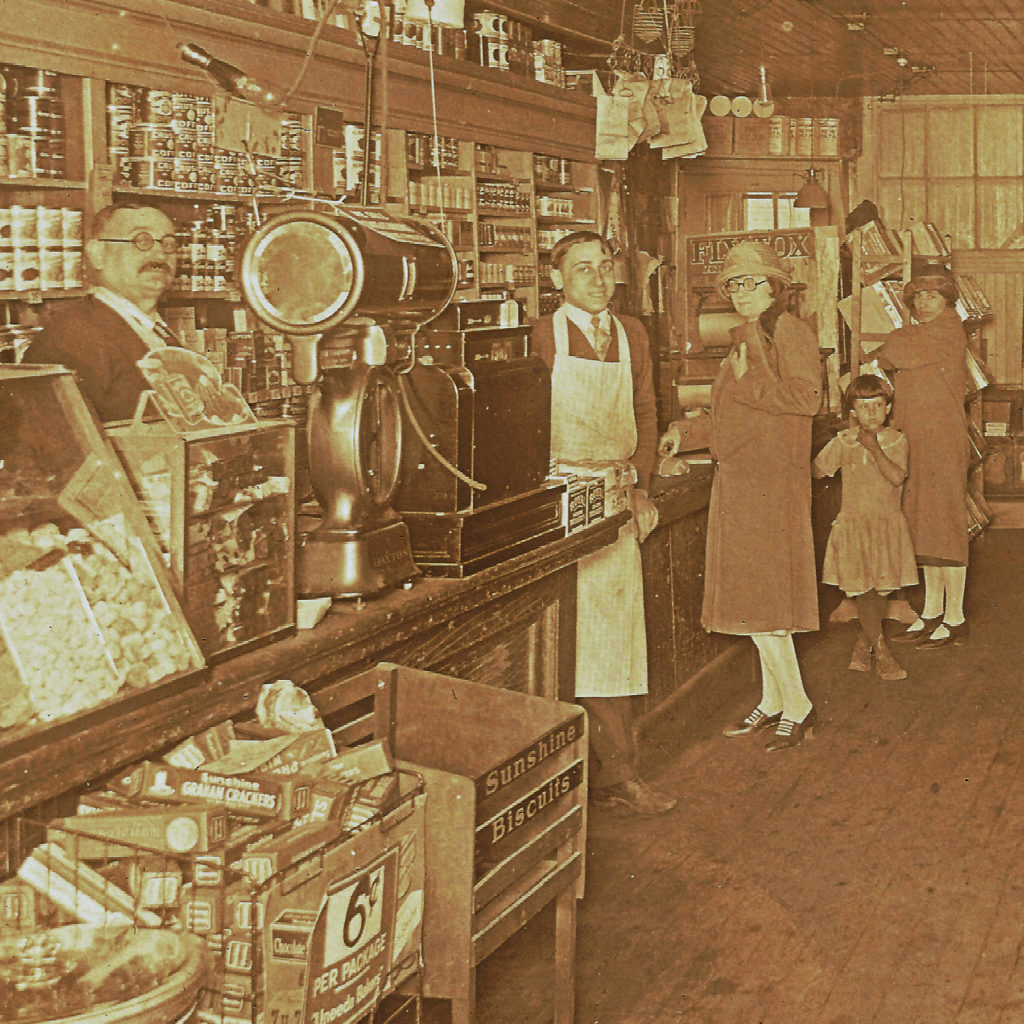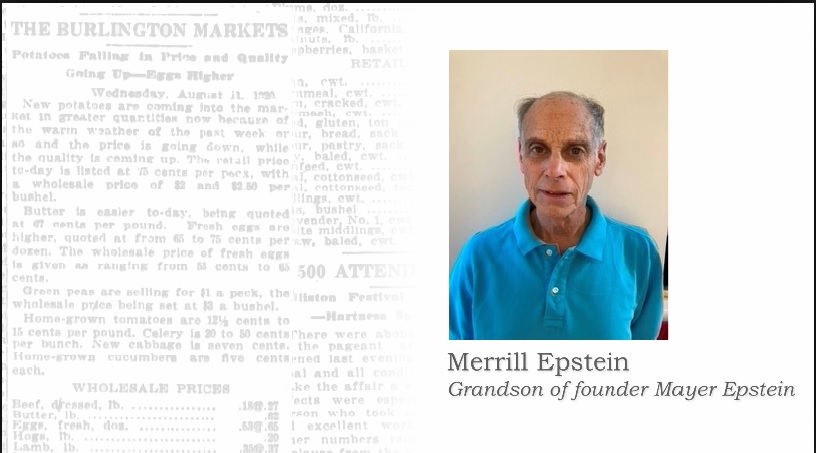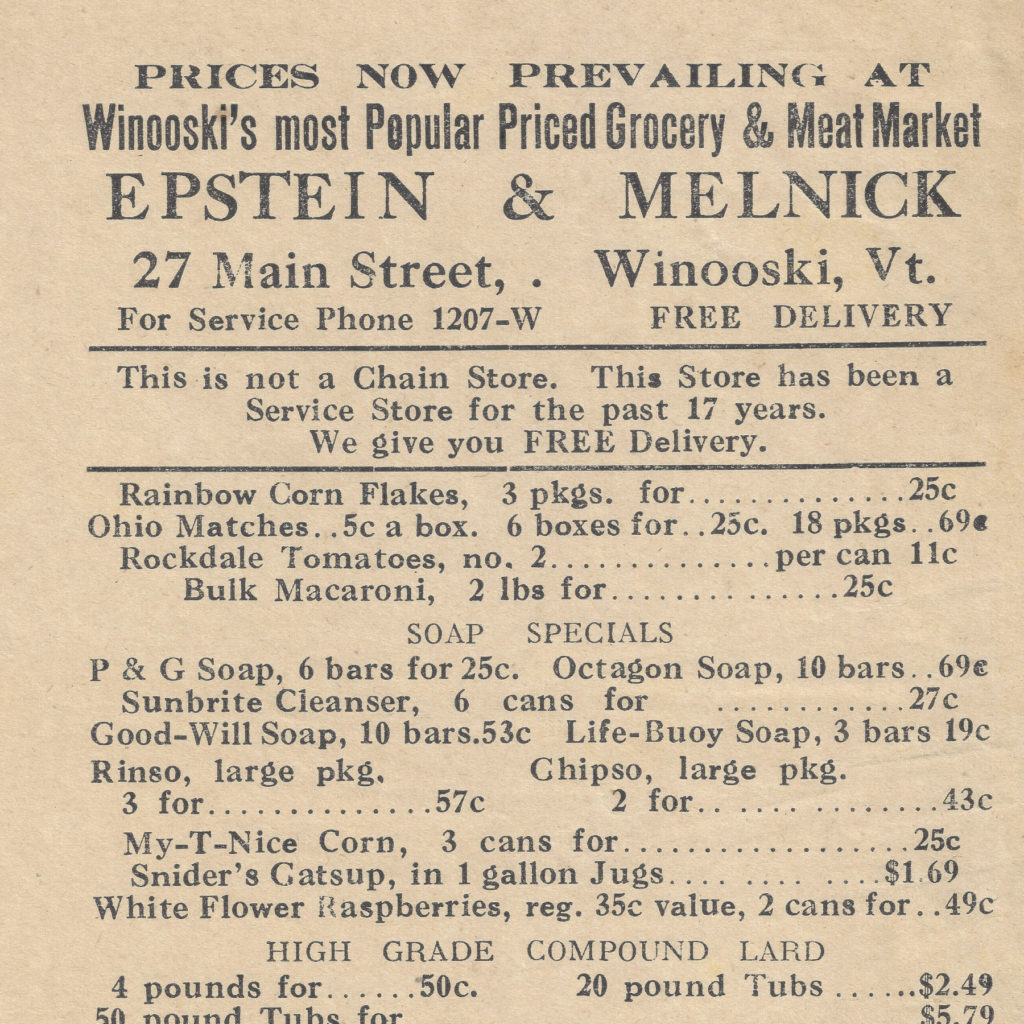 More than a Market
More than a Market
Epstein & Melnick Market
A Jewish Market at 27 Main Street in Winooski 1910-1973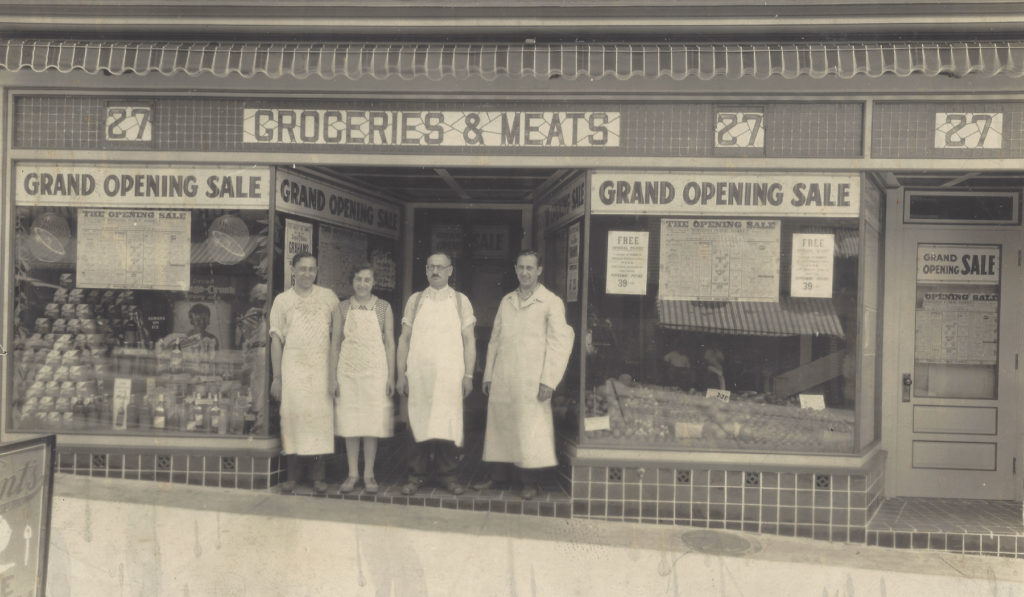
Countless Jewish-owned businesses operated in the Old Jerusalem neighborhood of Burlington, but Mayer H. Epstein and Samuel Z. Melnick set their sights across the river in Winooski, where only a handful of Jewish families lived. They established a thriving market that served the community for sixty-three years, before the building became a casualty of urban renewal. By then the Epstein family had been operating the market on its own for twenty-five years.
Mayer and Minnie Melnick Epstein, and their son Louis, emigrated from Ivye, Russia (today, Iwye, Belarus), to the United States around 1900, perhaps to escape the growing unrest and repression of Jewish culture that precipitated the first Russian Revolution in 1905. They joined the Epstein family in Mount Pleasant, Pennsylvania, before moving to Burlington, where Minnie’s brother Samuel Melnick lived. The Jewish community was closely intertwined in those days; marriages frequently occurred between families from the same shtetls, or villages, in Eastern Europe. Mayer came from a distinguished family of rabbis, but had chosen groceries as his livelihood in Ivye. He took a job as a clerk at Saiger’s Grocery and Department Store at 87-95 North Avenue and the family lived in an apartment above the store.
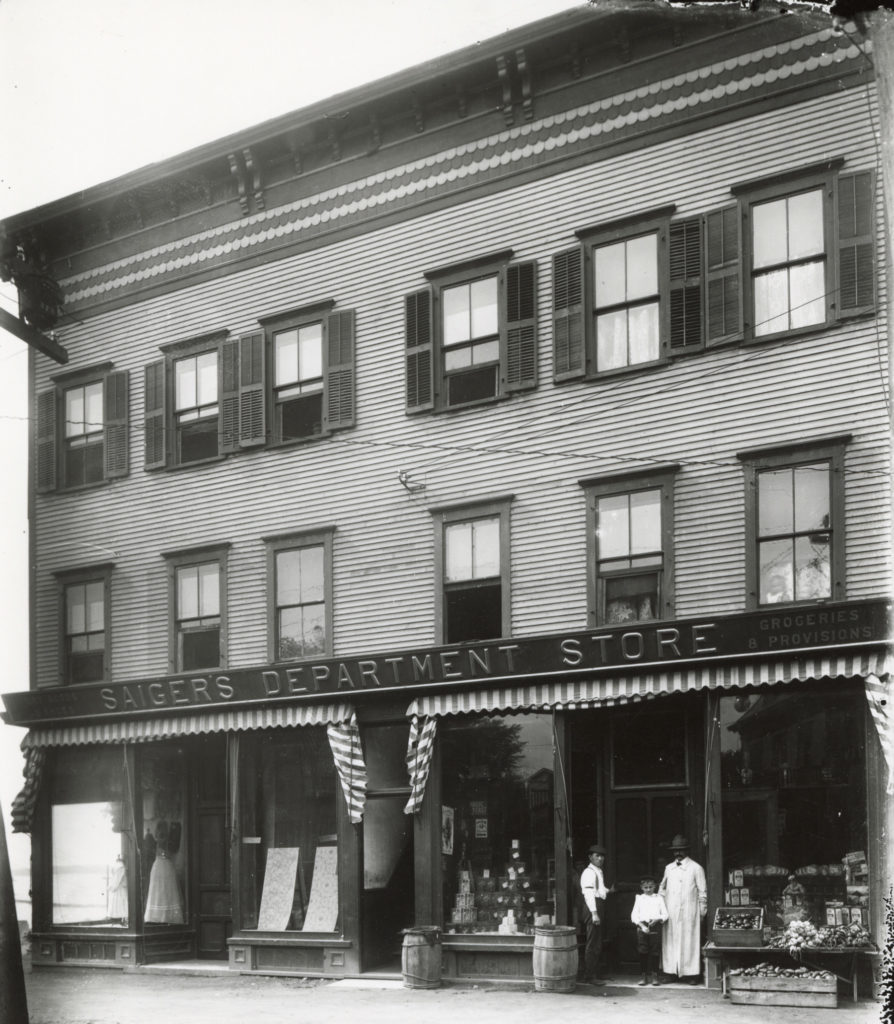
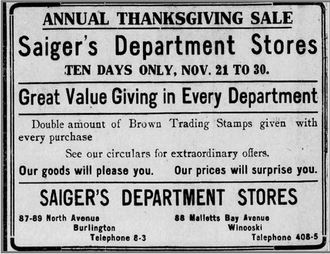
When the Saiger family opened a second store on Mallet’s Bay Avenue in Winooski in 1908, Mayer and Sam managed the store. After the Saigers withdrew, Mayer and Sam continued to operate there as the People’s Bargain Store.
In 1910, they moved to 27 Main Street and reopened as Epstein & Melnick. All five Epstein children—Louis, Sam, John, Eva, and Sophia—worked at the store and lived in the apartment upstairs off and on until the store closed. Mayer and Minnie’s grandchildren Merrill and Judy fondly recall spending Sunday afternoons in the apartment upstairs with their aunts while their father, Sam, did inventory.
It was a cozy place where the family celebrated Passover each year, since it was an easy climb upstairs to begin the evening Seder. When Sam was done with the weekly accounting, the family would go on picnics at Ethan Allen Park or for a drive in the country.
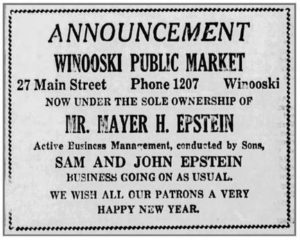
In 1939, Sam Melnick left the business and Mayer handed over management of the store to his sons Sam and John. By then, eldest son, Louis, had opened Lake View Market (1933-1963) on Shelburne Street in Burlington. The daughters had specific jobs—Eva cut and packaged the meat and Sophia delivered to customers and picked up inventory from suppliers like McKenzie’s Meats and Champlain Fruit Company in Burlington. By the 1940s, the shift to self-serve reconfigured the central open space into aisles of canned and dry goods. The store sold fresh, local produce, with “the corn you’ve been waiting for” a highlight.
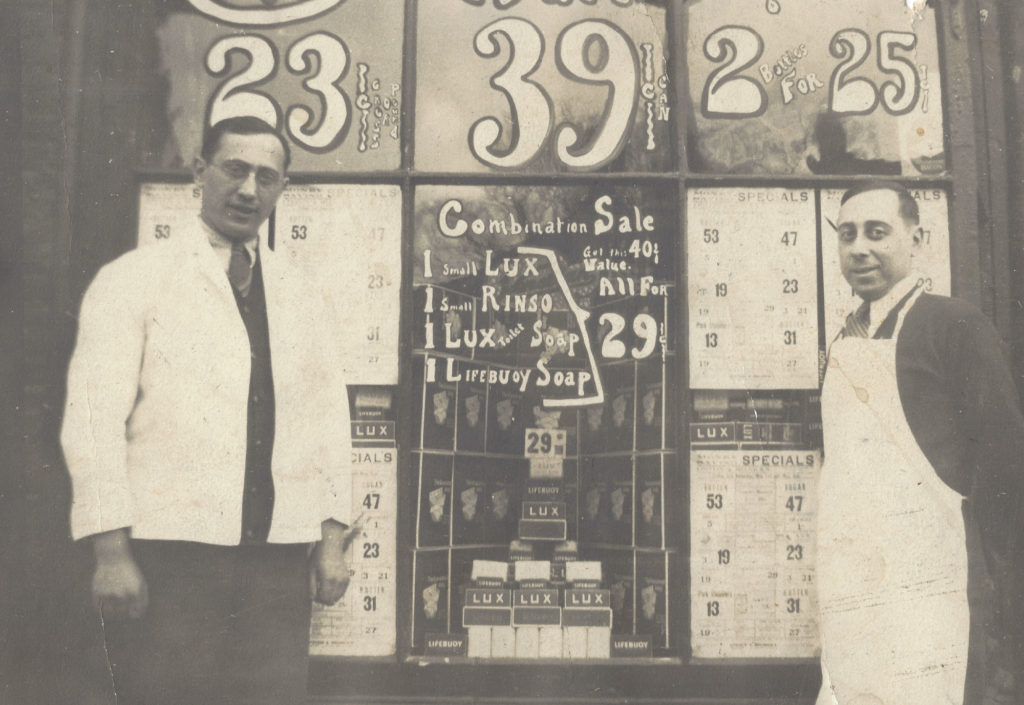
The store carried very few kosher items, a reflection of the small Jewish community in Winooski. For special Passover items for themselves, the Epsteins shopped at Blumenthal’s Market in Burlington. Though observant Jews, they opened the market on the Sabbath—unlike many of the Little Jerusalem markets—but closed on the major Jewish holidays.
As the nature of the grocery business evolved, Epstein & Melnick adapted to remain competitive. Free delivery, the addition of a meat counter, the installation of an illuminated gas pump out front for “autoists,” and entertaining ads scripted by John helped to retain the customer base.
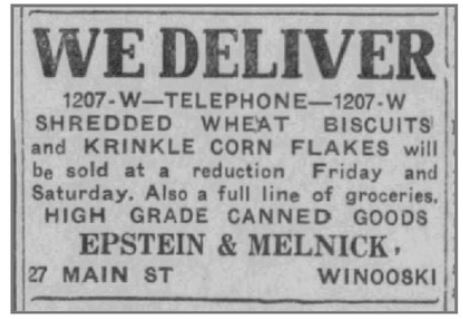
We Deliver
“We deliver” was a prominent feature of store ads throughout its history. Horse and wagon gave way to a delivery truck by 1920. If it was a short walk, family members used a dolly.
The Epstein brothers co-owned a successful business, but their personalities were very different. Where John was gregarious with a flamboyant sense of humor, Sam was quiet with a dry wit.
John performed in countless variety shows and plays to raise money for local organizations—singing, dancing, and serving as “end man.” His creative ads in the Burlington Daily News attracted attention from Food Topics, a national newspaper for retail grocers. John attributed the market’s robust sales to his “personal touch” advertising combined with the emphasis on special savings. The ads typically began with a personal note to customers or a whimsical anecdote, sometimes mentioning customers or family by name. John spent three or four hours each week at the newspaper advertising office designing his ad. He also used the ads to promote local causes like voting or the PTA.

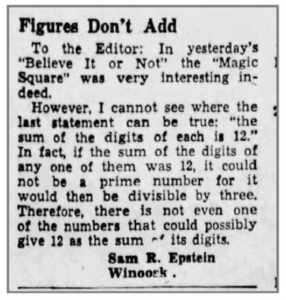
Sam was just as likely to spend an evening composing a Letter to the Editor in the evening, sharing his knowledge of history and culture or commenting on a news article or opinion. He took delight in puzzles of all kinds – acrostics, palindromes, and other brainteasers. His son, Merrill, recalls that for every president elected, he would do an acrostic with the name of the president in it and send it to the White House. He usually received a response.
Sam always had a pencil resting on his ear and he wore the same little Irish hat every day. If your bill came to 4.44, he’d say it’s the same amount backwards. —Jeff Rawding, Winooski customer
